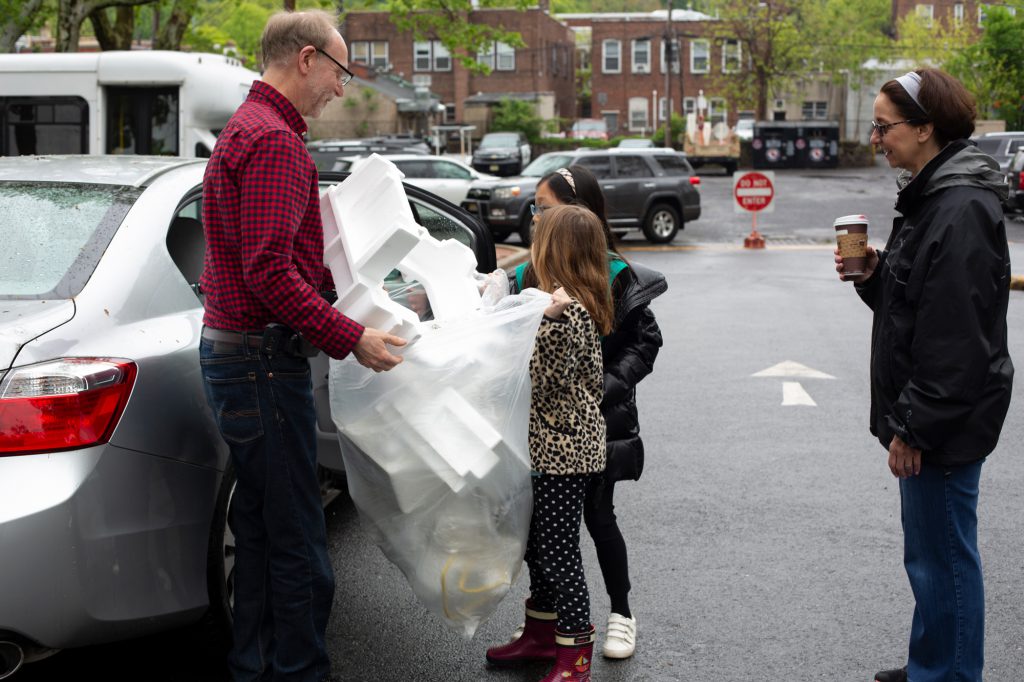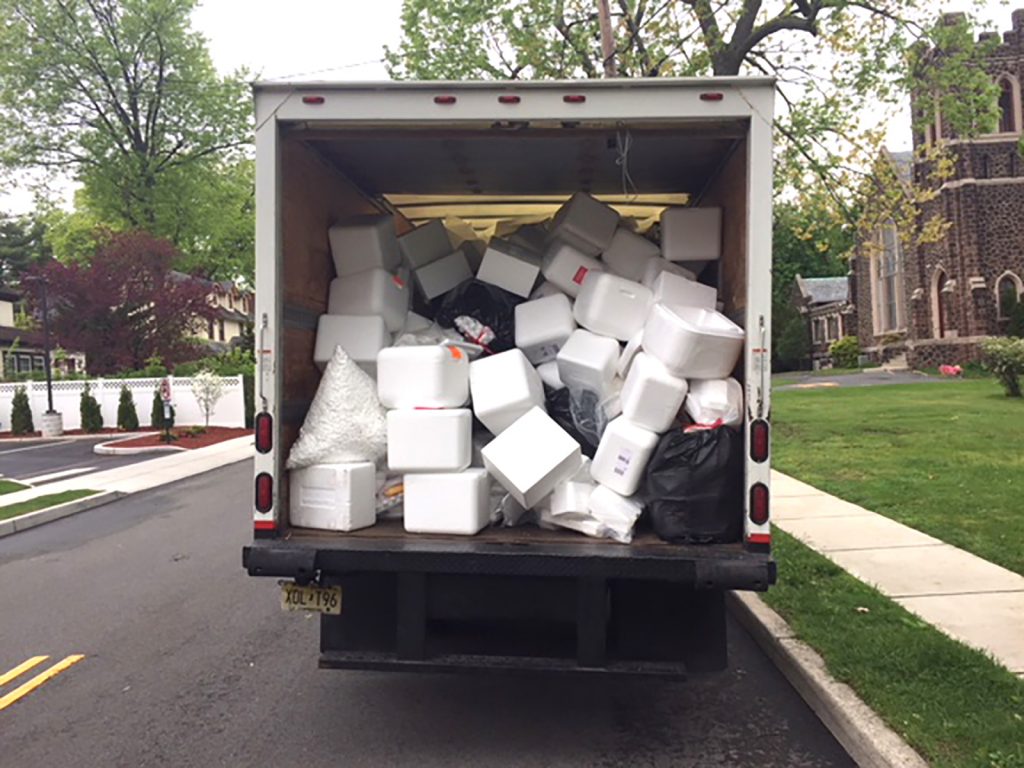(Expanded Polystyrene Foam) is a petroleum-based plastic material. It is used for disposable coffee cups, plates, trays, coolers, packaging material, and building insulation. EPS is readily recyclable, however, most of the EPS in Bergen County ends up in landfill. Bring your clean, white Styrofoam to Wood Park on June 8 and we will bring it to a recycling center!


Health Hazards of Styrofoam
- Styrofoam contains a neurotoxin, styrene, which leaches into your food and drinks. When you eat and drink from Styrofoam food containers, you’re also eating neurotoxins.
- Styrene causes cancer in laboratory animals and is “Reasonably Anticipated to Be Carcinogenic” to humans.
- 100% of all human fat tissue samples contain styrene residue. Environmental Hazards
- Styrofoam manufacturing is the 5th largest producer of hazardous waste in America.
- Styrofoam manufacturing creates tropospheric ozone, a serious air pollutant.
- In the US, Styrofoam is made from hydro fracked natural gas. Buying and selling Styrofoam financially supports the fracking industry.
- * Styrofoam food containers are not recycled and don’t decompose.
- * In the US, 73 billion Styrofoam cups and plates are thrown into landfill every year.
- * Americans spend $55 million a year to dump Styrofoam in landfill.
- * 38% of Hackensack River’s plastic pollution is Styrofoam.
- * Styrofoam and plastics are the largest source of marine litter and debris. Cleaning up the Hudson-Raritan Estuary costs $59,063,285 million dollars every year.
- * When fish and wildlife eat small pieces of Styrofoam, it can kill them.
Environmental Hazards of Styrofoam
- Styrofoam manufacturing is the 5th largest producer of hazardous waste in America.
- Styrofoam manufacturing creates tropospheric ozone, a serious air pollutant.
- In the US, Styrofoam is made from hydro fracked natural gas. Buying and selling Styrofoam financially supports the fracking industry.
Styrofoam is Not Recyclable
- Styrofoam food containers are not recycled and don’t decompose.
- In the US, 73 billion Styrofoam cups and plates are thrown into landfill every year.
- Americans spend $55 million a year to dump Styrofoam in landfill.
Styrofoam Kills Fish & Wildlife
- 38% of Hackensack River’s plastic pollution is Styrofoam.
- Styrofoam and plastics are the largest source of marine litter and debris. Cleaning up the Hudson-Raritan Estuary costs $59,063,285 million dollars every year.
- When fish and wildlife eat small pieces of Styrofoam, it can kill them.

